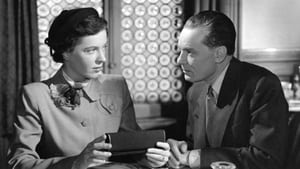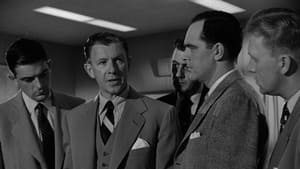Contact: [email protected]
Video Sources 0 Views
- Walk East on Beacon

Walk East on Beacon 1952 First Early Colored Films Version
Synopsis
Table of Contents
ToggleReview: Walk East on Beacon! (1952) – A Gripping Cold War Thriller
![]()
Introduction
Walk East on Beacon!, released in 1952, is a captivating Cold War thriller directed by Alfred L. Werker. Starring George Murphy, Finlay Currie, and Virginia Gilmore, this film offers a tense and suspenseful portrayal of espionage and intrigue during the height of the Red Scare. In this review, we’ll delve into the gripping narrative of Walk East on Beacon! and discuss its significance within the context of Cold War cinema.
Check The Full Colorized Movies List
Check Our Colorized Movies Trailer Channel
Understanding Walk East on Beacon! (1952): Director, Cast, and Genre
Directed by Alfred L. Werker, Walk East on Beacon! features a talented cast led by George Murphy and Finlay Currie. The film falls within the Cold War thriller genre, characterized by its suspenseful plot, political intrigue, and portrayal of espionage activities.
Exploring the World of Walk East on Beacon! (1952): Plot and Characters
Walk East on Beacon! follows the story of FBI agent Matt Cvetic (George Murphy) as he infiltrates a Communist spy ring operating in the United States. As Cvetic navigates the shadowy world of espionage, he must grapple with moral dilemmas and personal sacrifices in the pursuit of national security. With the help of his FBI colleagues and informants, Cvetic races against time to uncover the truth and prevent a devastating act of sabotage.
The Art of Film Colorization
While Walk East on Beacon! was originally filmed in black and white, its early colorized version adds a new dimension to its atmospheric storytelling and evocative visuals. The colorization process enhances the film’s moody lighting and dramatic set pieces, immersing viewers in the tense and shadowy world of Cold War espionage.
Early Colored Films: A Brief History
The history of early colored films is marked by innovation and experimentation as filmmakers sought to enhance the visual appeal of their movies. From hand-tinted frames to groundbreaking technicolor processes, the evolution of colorization techniques transformed the cinematic landscape, offering audiences a new way to experience their favorite films.
Walk East on Beacon! (1952) and Its Early Colored Version
The decision to release Walk East on Beacon! in a colorized format was met with anticipation and excitement. While some purists may prefer the original black and white version, the early colorized edition of the film adds a new layer of depth to its atmospheric storytelling, immersing viewers in the shadowy world of Cold War espionage and political intrigue.
The Debate Over Film Colorization
The debate over film colorization continues to divide audiences and industry professionals alike. While some argue that colorization enhances the visual appeal of classic films and makes them more accessible to modern audiences, others maintain that it compromises the artistic integrity of the original work. As technology advances and filmmaking techniques evolve, the debate over colorization remains a topic of ongoing discussion within the film community.
Examining Walk East on Beacon! (1952) as an Early Colored Film
Viewing Walk East on Beacon! in its early colorized iteration offers audiences a fresh perspective on its tense and suspenseful narrative. The colorization process enhances the film’s moody atmosphere and dramatic visuals, heightening the tension of its gripping storyline and immersing viewers in the high-stakes world of Cold War espionage.
Influence and Legacy: Walk East on Beacon! (1952)’s Impact on Cinema
Walk East on Beacon! is a compelling example of Cold War cinema that continues to resonate with audiences today. Its gripping narrative, tense atmosphere, and powerful performances have inspired generations of filmmakers and influenced the portrayal of espionage activities in popular culture. As a testament to its enduring relevance, Walk East on Beacon! remains a classic Cold War thriller that continues to captivate audiences around the world.
Director’s Cinematic Legacy: Beyond Walk East on Beacon! (1952)
Alfred L. Werker’s directorial legacy extends far beyond Walk East on Beacon!, encompassing a diverse body of work that spans multiple genres and styles. As a filmmaker, Werker was known for his ability to create tension and suspense onscreen, as evidenced by his masterful direction of Walk East on Beacon! The film stands as a testament to his talent and creativity, solidifying his reputation as one of the great directors of his time.
Themes Explored in Walk East on Beacon! (1952)
At its core, Walk East on Beacon! explores themes of loyalty, betrayal, and the moral complexities of espionage. Through its compelling narrative and nuanced characters, the film delves into the murky world of Cold War politics, offering a thought-provoking examination of the sacrifices made in the name of national security. Walk East on Beacon! serves as a chilling reminder of the dangers posed by ideological conflict and the lengths to which individuals will go to protect their beliefs.
Reception and Controversy Surrounding Walk East on Beacon! (1952)
Upon its release, Walk East on Beacon! received widespread critical acclaim for its gripping narrative, tense atmosphere, and powerhouse performances. However, the decision to release the film in a colorized format sparked debate among fans and critics alike. While some praised the colorization process for enhancing the film’s visual appeal, others questioned its necessity and expressed concern about preserving the integrity of Werker’s original vision.
Where to Watch Walk East on Beacon! (1952) Online
For those eager to experience Walk East on Beacon! for themselves, the film is readily available on popular streaming platforms such as Amazon Prime Video, Google Play Movies, and iTunes. Whether viewed in its original black and white format or its early colorized iteration, Walk East on Beacon! offers a gripping and unforgettable cinematic experience that is sure to keep audiences on the edge of their seats.
FAQs About Walk East on Beacon! (1952)
1. Is Walk East on Beacon! based on a true story?
Walk East on Beacon! is a fictionalized portrayal of espionage activities during the Cold War era. While the film draws inspiration from real-life events and political tensions of the time, its characters and storyline are works of fiction.
2. Who starred in Walk East on Beacon!?
Walk East on Beacon! stars George Murphy as FBI agent Matt Cvetic, Finlay Currie as FBI chief J. Edgar Hoover, and Virginia Gilmore as Soviet agent Emmy.
3. What is the central conflict of Walk East on Beacon!?
At its core, Walk East on Beacon! revolves around the central conflict between loyalty and betrayal. As FBI agent Matt Cvetic infiltrates a Communist spy ring, he must grapple with moral dilemmas and personal sacrifices in the pursuit of national security.
4. Why was Walk East on Beacon! released in a colorized format?
The decision to release Walk East on Beacon! in a colorized format was made with the intention of enhancing the film’s visual appeal and immersing audiences in its atmospheric storytelling. While some purists may prefer the original black and white version, the early colorized edition of Walk East on Beacon! offers a fresh perspective on its gripping narrative and tense atmosphere.
5. What is the legacy of Walk East on Beacon!?
Walk East on Beacon! is widely regarded as a classic Cold War thriller that continues to resonate with audiences today. Its gripping narrative, tense atmosphere, and powerful performances have inspired generations of filmmakers and influenced the portrayal of espionage activities in popular culture.
6. Are there any sequels or remakes of Walk East on Beacon!?
No, there are no direct sequels or remakes of Walk East on Beacon!. However, the film’s compelling narrative and tense atmosphere have left an indelible mark on the Cold War thriller genre, inspiring countless imitators and influencing the portrayal of espionage activities in film and television.
7. Where can I watch Walk East on Beacon! online?
For those eager to experience Walk East on Beacon! for themselves, the film is readily available on popular streaming platforms such as Amazon Prime Video, Google Play Movies, and iTunes. Whether viewed in its original black and white format or its early colorized iteration, Walk East on Beacon! offers a gripping and unforgettable cinematic experience that is sure to keep audiences on the edge of their seats.
Conclusion
In conclusion, Walk East on Beacon! remains a gripping and suspenseful Cold War thriller that continues to captivate audiences with its tense atmosphere, gripping narrative, and powerhouse performances. Whether viewed in its original black and white format or its early colorized iteration, Alfred L. Werker’s classic film offers a chilling glimpse into the shadowy world of espionage and political intrigue. As viewers immerse themselves in the high-stakes world of Walk East on Beacon!, they are reminded of the enduring tensions of the Cold War era and the sacrifices made in the name of national security.













